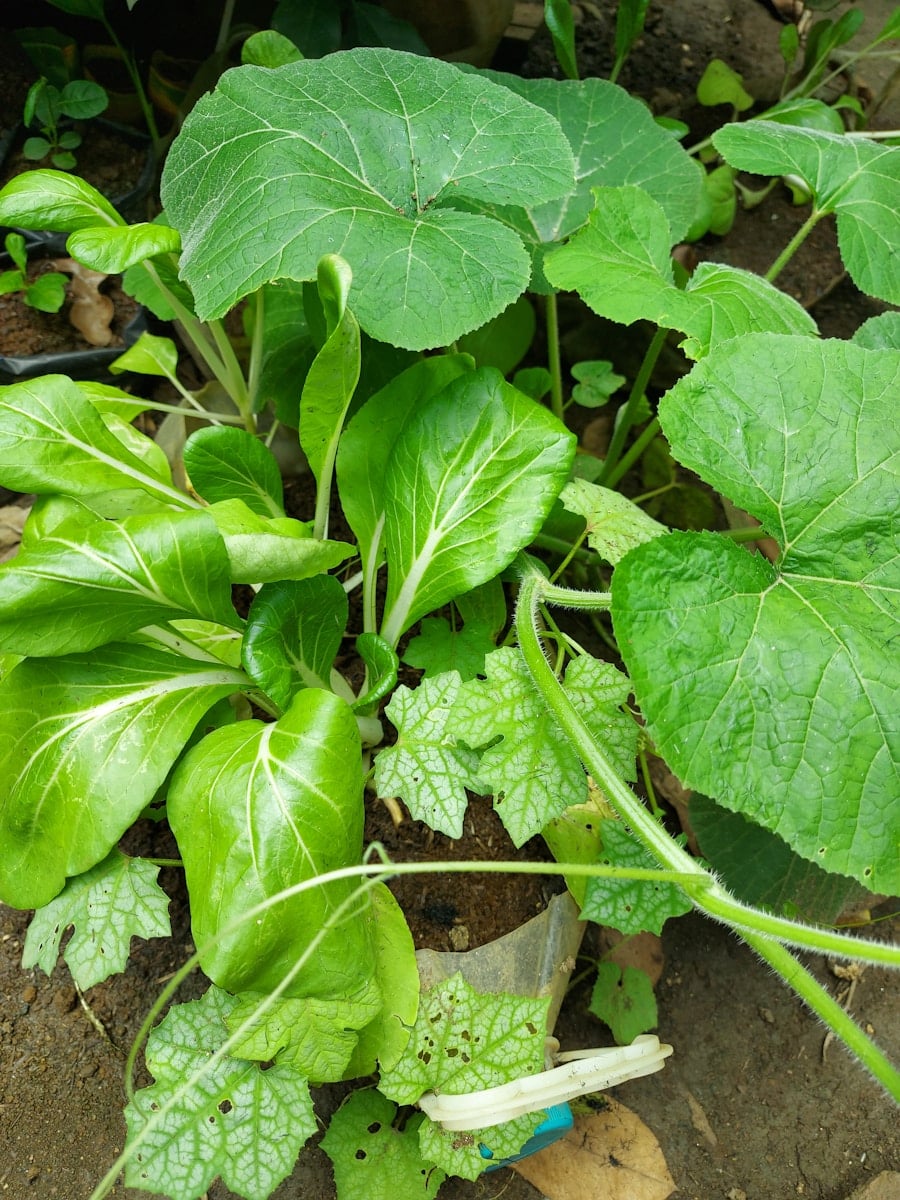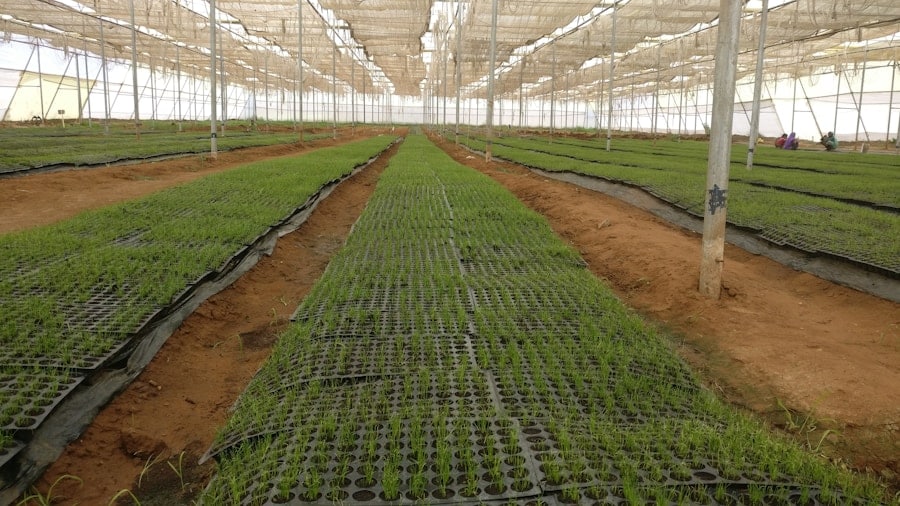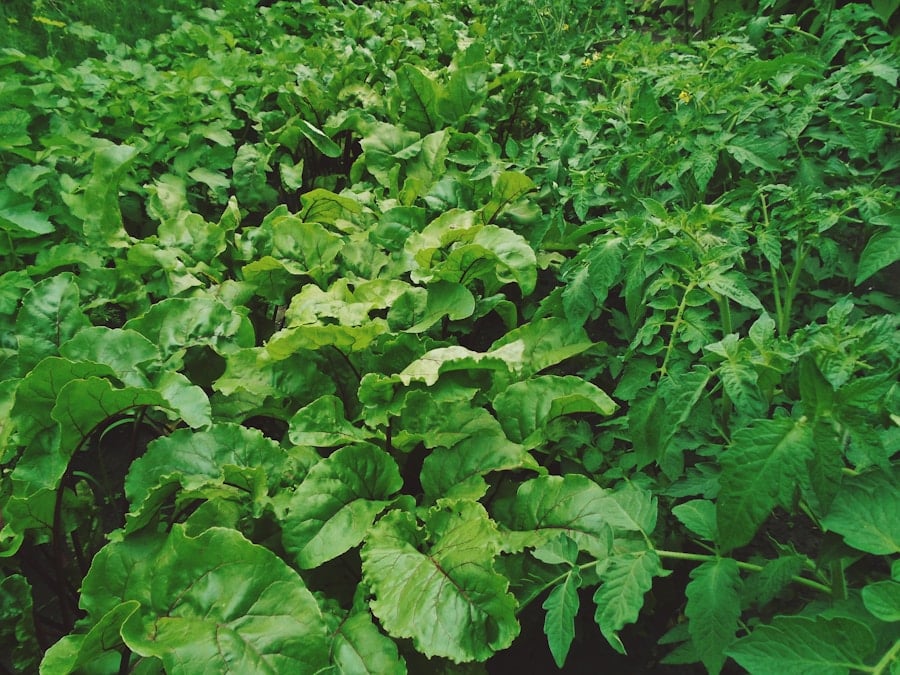The nutritional needs of vegetable seedlings are critical to their development and overall health. During the early stages of growth, seedlings require a balanced supply of macronutrients and micronutrients to establish strong roots, develop robust stems, and produce healthy leaves. Macronutrients, which include nitrogen (N), phosphorus (P), and potassium (K), are essential for various physiological functions.
Nitrogen is vital for leaf growth and overall vegetative development, phosphorus supports root and flower development, while potassium enhances disease resistance and overall plant vigor. In addition to macronutrients, seedlings also need a range of micronutrients such as iron, manganese, zinc, and copper. These elements, although required in smaller quantities, play crucial roles in enzymatic reactions and metabolic processes.
For instance, iron is essential for chlorophyll synthesis, which is necessary for photosynthesis. A deficiency in any of these nutrients can lead to stunted growth, yellowing leaves, or even plant death. Therefore, understanding the specific nutritional requirements of different vegetable seedlings is paramount for successful gardening. Soil Compost can greatly benefit from the use of organic fertilizers, for more information visit Soil Compost Fertilizers.
Key Takeaways
- Vegetable seedlings have specific nutritional needs that must be met for healthy growth and development.
- When choosing a fertilizer for vegetable seedlings, consider the nutrient content, release rate, and organic vs. synthetic options.
- Organic fertilizers are natural and environmentally friendly, while synthetic fertilizers provide precise nutrient levels but may contain harmful chemicals.
- Proper application of fertilizer, including timing and dosage, is crucial for maximizing growth and preventing nutrient imbalances.
- Common mistakes when fertilizing vegetable seedlings include over-fertilizing, using the wrong type of fertilizer, and neglecting to monitor plant health.
Choosing the Right Fertilizer for Your Vegetable Seedlings
Understanding Fertilizer Formulations
Fertilizers come in different formulations, each designed to meet specific needs. A starter fertilizer with a higher phosphorus content is often recommended for seedlings as it promotes root development. A typical ratio for such fertilizers might be 10-20-10, where the middle number indicates a higher phosphorus level.
Choosing the Right Form: Liquid or Granular
When choosing a fertilizer, it’s essential to consider the form it comes in – liquid or granular. Liquid fertilizers are typically absorbed more quickly by seedlings, making them ideal for immediate nutrient uptake. Granular fertilizers, on the other hand, release nutrients slowly over time, providing a more sustained feeding option.
Organic vs. Synthetic Fertilizers: What’s the Difference?
The choice between organic and synthetic fertilizers can significantly impact your seedlings’ growth and health. Each type has its own set of characteristics and benefits, making it crucial to understand the differences before making a decision.
The debate between organic and synthetic fertilizers is a significant consideration for many gardeners. Organic fertilizers are derived from natural sources such as compost, manure, or bone meal. They improve soil structure and promote beneficial microbial activity while providing a slow release of nutrients.
However, they often have lower nutrient concentrations compared to synthetic options and may require more frequent applications. On the other hand, synthetic fertilizers are chemically manufactured and typically contain higher concentrations of nutrients.
They can provide immediate results, making them appealing for gardeners looking for quick fixes. However, their use can lead to nutrient leaching and potential soil degradation if not managed properly. Additionally, synthetic fertilizers may disrupt the natural microbial ecosystem in the soil.
Understanding these pros and cons is essential for making informed decisions about which type of fertilizer aligns best with your gardening philosophy and goals.
How to Apply Fertilizer to Maximize Growth

Applying fertilizer correctly is crucial for maximizing the growth potential of vegetable seedlings. Timing is an essential factor; fertilizing too early can lead to nutrient burn, while fertilizing too late may hinder growth. A general guideline is to wait until seedlings have developed their first true leaves before applying fertilizer.
This ensures that they have established enough root systems to absorb nutrients effectively. When applying fertilizer, it is important to follow the manufacturer’s instructions regarding dosage and frequency. Over-fertilization can lead to nutrient imbalances and damage to young plants. For liquid fertilizers, diluting them according to the recommended ratio is vital to prevent root burn.
Granular fertilizers should be evenly distributed around the base of the seedlings and lightly worked into the soil to ensure even nutrient distribution. Watering after application helps dissolve the fertilizer and facilitates nutrient uptake by the roots.
Common Mistakes to Avoid When Fertilizing Vegetable Seedlings
| Mistake | Impact |
|---|---|
| Over-fertilizing | Can lead to fertilizer burn, stunted growth, or even death of seedlings |
| Under-fertilizing | May result in weak and unhealthy seedlings with poor growth |
| Using the wrong type of fertilizer | Can cause nutrient imbalances and deficiencies in seedlings |
| Applying fertilizer at the wrong time | May not provide the necessary nutrients when seedlings need them most |
| Not following recommended dosage | Can lead to over or under fertilization, affecting seedling health |
One of the most common mistakes gardeners make when fertilizing vegetable seedlings is over-fertilization.
It’s crucial to adhere strictly to recommended application rates and avoid the temptation to “feed” seedlings more than necessary in hopes of accelerating growth.
Another frequent error is neglecting soil testing before fertilization. Soil tests provide valuable information about existing nutrient levels and pH balance, allowing gardeners to tailor their fertilization strategy accordingly. Without this knowledge, one might apply fertilizers that exacerbate existing deficiencies or imbalances.
Additionally, failing to monitor seedling response after fertilization can lead to missed opportunities for adjustment; observing changes in leaf color or growth patterns can provide insights into whether your fertilization strategy is effective or needs modification.
Best Fertilizers for Specific Types of Vegetables
Different types of vegetables have varying nutritional requirements that can influence the choice of fertilizer. For leafy greens such as lettuce and spinach, a nitrogen-rich fertilizer is ideal as it promotes lush foliage growth. A balanced fertilizer with an N-P-K ratio of 10-10-10 can also work well during their early growth stages.
Root vegetables like carrots and radishes benefit from fertilizers that are higher in phosphorus and potassium once they have established themselves in the soil. A formulation with an N-P-K ratio of 5-10-10 can support root development while ensuring that these vegetables grow strong and healthy underground. For fruiting vegetables such as tomatoes and peppers, a fertilizer with a higher potassium content—like 5-10-15—can enhance fruit set and overall yield.
Tips for Monitoring and Adjusting Fertilizer Use as Seedlings Grow

Monitoring the growth of vegetable seedlings is essential for adjusting fertilizer use effectively as they mature. Regularly inspecting seedlings for signs of nutrient deficiencies or excesses can guide your fertilization strategy. For example, yellowing leaves may indicate a nitrogen deficiency, while burnt leaf tips could signal over-fertilization.
As seedlings grow larger and develop more extensive root systems, their nutrient needs will change accordingly. It’s advisable to gradually increase fertilizer application rates as plants mature while also considering environmental factors such as soil type and moisture levels. Keeping a gardening journal can be beneficial; documenting observations about plant health alongside fertilization practices allows for better-informed decisions in future growing seasons.
Troubleshooting Common Issues with Fertilizing Vegetable Seedlings
Despite careful planning and execution, issues may still arise when fertilizing vegetable seedlings. One common problem is nutrient lockout, which occurs when imbalances in soil pH prevent plants from absorbing available nutrients effectively. Testing soil pH regularly can help identify this issue; if pH levels are outside the optimal range (typically between 6.0 and 7.0 for most vegetables), amendments may be necessary to restore balance.
Another issue could be related to water management; overwatering or underwatering can affect nutrient uptake significantly. Seedlings that are consistently overwatered may exhibit symptoms similar to those caused by over-fertilization due to root rot or poor oxygen availability in the soil. Conversely, underwatered plants may show signs of stress that could be misinterpreted as nutrient deficiencies.
Understanding these dynamics is crucial for troubleshooting problems effectively and ensuring healthy growth for your vegetable seedlings.
If you are looking for the best fertilizer for your vegetable seedlings, you may want to check out this article on exploring the joys of gardening: a comprehensive guide. This article provides valuable information on different types of fertilizers and how to choose the best one for your vegetable seedlings. It also offers tips on how to properly fertilize your plants to ensure healthy growth and abundant harvest.
FAQs
What is the best fertilizer for vegetable seedlings?
The best fertilizer for vegetable seedlings is a balanced, water-soluble fertilizer with a ratio of 10-10-10 or 20-20-20, which provides equal amounts of nitrogen, phosphorus, and potassium.
When should I start fertilizing my vegetable seedlings?
You can start fertilizing your vegetable seedlings once they have developed their first true leaves, typically 2-3 weeks after germination.
How often should I fertilize my vegetable seedlings?
You should fertilize your vegetable seedlings every 2-3 weeks with a diluted solution of water-soluble fertilizer, following the instructions on the product label.
Can I use organic fertilizer for my vegetable seedlings?
Yes, you can use organic fertilizers such as compost, fish emulsion, or seaweed extract for your vegetable seedlings. These organic options provide nutrients and improve soil health.
Should I use a different fertilizer for different types of vegetables?
While a balanced fertilizer can work for most vegetable seedlings, some specific vegetables may benefit from additional nutrients. It’s best to research the specific needs of the vegetables you are growing and adjust the fertilizer accordingly.

